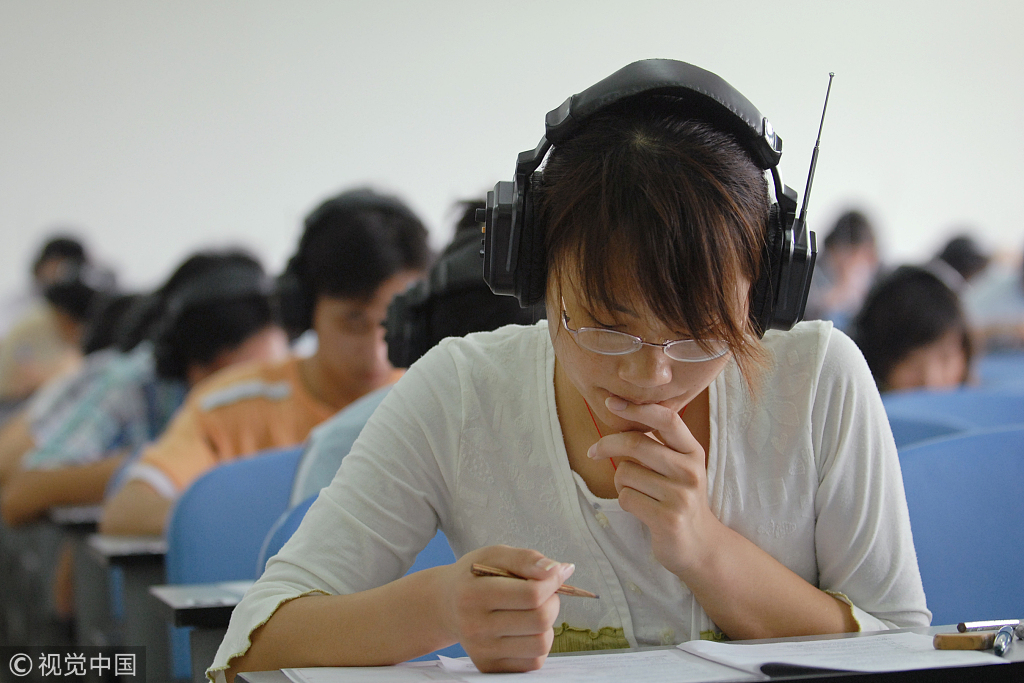Retooling English learning in China


The ability to speak a foreign language can have far-reaching benefits, from developing a better understanding of another culture to striking a business deal. All across the world, it's language that binds people more closely than either religion or skin color.
In some parts of the world, learning a second language is now an important part of the curriculum, as much as any other subject. For instance in Europe, about 90 percent of students learn a foreign language, with English the most studied language across all age ranges in the continent. In the US, on the other hand, about 20 percent students learn a foreign language, with Spanish taking the top spot.
Meanwhile, in China, study of a second language — primarily English — began in the 17th century, but the system lacked formal structure and was limited in scope and reach. The start of structured learning began when the government established the first foreign language learning school in Beijing in 1862. Slowly but surely language schools, which were at that time primarily funded by the government or missionaries, spread to other parts of the country, especially Shanghai and Guangzhou.
What drove these schools, and even earlier non-formal attempts by Chinese rulers, was the realization knowledge of a foreign language was necessary not only for trade and commerce, but also to beat Western invaders at their own game by learning their language and understanding their military strategies and planning. These twin desires spurred the growth of foreign language schools in the nation.
But it wasn't until reform and opening-up four decades ago that China began focusing on teaching English in schools all across the country. Today the language is taught in all regions. Two landmark moments pushed the spread of English: China joining the WTO in 2001 and Beijing hosting the Summer Olympics in 2008. These two events created a massive need in the market for English speakers. Then, as economic prosperity began to spread, more parents started investing in English courses for their children.
Currently the English language market, both online and offline, is worth millions of dollars. Parents in municipalities and third- and fourth-tier cities are spending heavily on English classes. The private education market in the country is projected to grow from $260 billion in 2018 to $330 billion in 2020. Both parents and students know English is a ticket to a better job, better salary and better status. But this demand is creating another disparity on top of already existing problems in the education sector.
While English has been part of the school curriculum for decades, the level of fluency varies from college to college and region to region. Those studying in big cities such as Beijing and Shanghai have an automatic advantage over those learning the language in rural areas. Students whose parents can afford after-school tutoring are better placed than students from weaker financial backgrounds. In the past 40 years, the government has taken numerous steps to address this problem. From creating syllabi in 1982, which were in turn expected to provide future English teachers to serve across the nation, to confining English to urban schools in 1984. All these measures have had varied degrees of success.
But the situation is far from ideal. The government's push to attract more private players in the sector is laudable, as it would ease pressure on government-run schools and provide more choice to students. Improving teaching methods and teacher standards are other positive steps. Apart from these measures, the government can also consider providing access to online classes taught by top-notch teachers to lower tier cities or rural schools, either online or offline. Big universities can create specially designed lectures which schools can use in class. This method can, to some extent, overcome the problem of quality teaching.
Another possible step is asking technology companies or nongovernmental organizations to create short videos of class lessons and other online tools that can supplement education in less advanced schools. This could be something akin to what California-based Khan Academy already does. Teachers from prestigious schools can come together and create educational resources that can be used across the country. The aim should be to provide quality education in both top schools and in institutions lower down the rung.
The author is a journalist with more than 18 years experience in media.


































